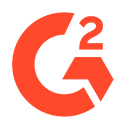My Airtable Plugin Grew 4X To $23K/Mo
This is a follow up story for Data Fetcher. If you're interested in reading how they got started, published almost 4 years ago, check it out here.
Hello again! Remind us who you are and what business you started.
Hey! My name is Andy Cloke, and I’m the founder of Data Fetcher. Data Fetcher is an Airtable extension that lets people import their data from other applications. For anyone who hasn’t heard of it, Airtable is a spreadsheet tool like Google Sheets, but with powerful automation and visualization features.
The Data Fetcher extension has no-code Airtable integrations (e.g. Facebook Ads, Google Analytics, OpenAI etc.), and custom requests for people familiar with APIs.
Data Fetcher has thousands of users and several hundred paying customers. We’re at $23,000 MRR with just one full-time employee (me!) and some part-time contractors.
Tell us about what you’ve been up to. Has the business been growing?
Since we last spoke, the business has grown from $6,000 to $23,000 in MRR. In some ways, it’s been more of the same: developing new integrations and improvements, then...

Download the report and join our email newsletter packed with business ideas and money-making opportunities, backed by real-life case studies.

Download the report and join our email newsletter packed with business ideas and money-making opportunities, backed by real-life case studies.

Download the report and join our email newsletter packed with business ideas and money-making opportunities, backed by real-life case studies.

Download the report and join our email newsletter packed with business ideas and money-making opportunities, backed by real-life case studies.

Download the report and join our email newsletter packed with business ideas and money-making opportunities, backed by real-life case studies.

Download the report and join our email newsletter packed with business ideas and money-making opportunities, backed by real-life case studies.

Download the report and join our email newsletter packed with business ideas and money-making opportunities, backed by real-life case studies.

Download the report and join our email newsletter packed with business ideas and money-making opportunities, backed by real-life case studies.





























